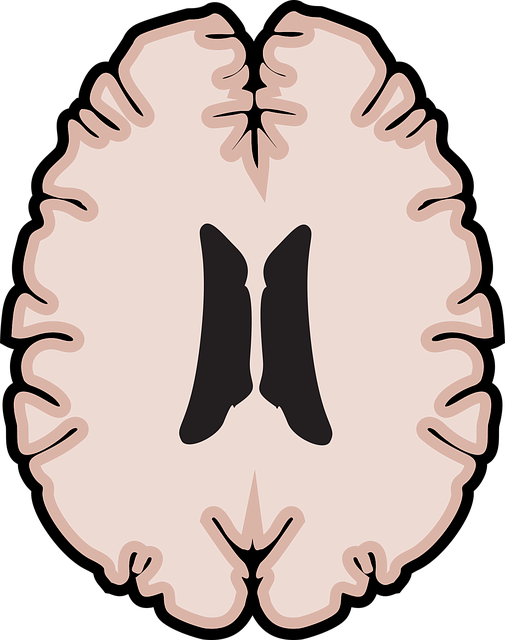Crisis Intervention Teams (CITs) are multidisciplinary groups that de-escalate emotional crises, preventing escalation and hospital admissions, and promoting long-term resilience. Broomfield Biofeedback Therapy is a revolutionary CIT training program combining traditional techniques with biofeedback to enhance self-awareness and stress management among healthcare providers. Effective CIT training should include self-awareness exercises and mental health awareness, breaking down stigmas and reducing emergency room visits. Challenges include funding inconsistency and ethical dilemmas, but future programs can be enhanced through digital tools, diverse training, robust networks, and practices like Broomfield Biofeedback Therapy.
In today’s complex landscape, effective crisis intervention teams (CITs) play a pivotal role in managing mental health emergencies. This article explores the essential training programs that empower professionals to respond proactively and compassionately during crises. From understanding CITs’ life-saving impact to examining innovative approaches like Broomfield Biofeedback Therapy, we delve into strategies for enhancing crisis response. Additionally, we analyze key components, benefits, challenges, and future prospects of CIT training, underscoring its significance in fostering resilient communities.
- Understanding Crisis Intervention Teams: Their Role and Impact
- Broomfield Biofeedback Therapy: A Unique Approach to Training
- Essential Components of an Effective Crisis Intervention Program
- Benefits, Challenges, and Future Directions for CIT Training
Understanding Crisis Intervention Teams: Their Role and Impact

Crisis Intervention Teams (CITs) play a vital role in responding to individuals facing severe emotional or psychological crises. These teams typically consist of trained professionals from various disciplines, including mental health experts, social workers, and law enforcement officers. Their primary objective is to de-escalate high-risk situations, provide immediate support, and connect individuals with appropriate long-term care. By fostering a collaborative environment, CITs offer a holistic approach to crisis management, addressing both the immediate needs of the individual and their underlying mental health challenges.
The impact of well-implemented Broomfield Biofeedback Therapy, for instance, has been profound, especially within the context of Community Outreach Program Implementation. These teams are instrumental in promoting resilience building and trauma support services, ensuring that individuals receive comprehensive care. By quickly identifying signs of distress and implementing evidence-based strategies, CITs can prevent escalation, reduce hospital admissions, and enhance overall community well-being. This proactive approach not only benefits those in crisis but also contributes to a more resilient and supportive society.
Broomfield Biofeedback Therapy: A Unique Approach to Training

Broomfield Biofeedback Therapy offers a unique and innovative approach to crisis intervention team training, focusing on empowering healthcare providers with effective burnout prevention strategies for healthcare providers. This method goes beyond traditional training by incorporating biofeedback techniques that enhance self-awareness and stress management skills. Through interactive exercises, participants learn to recognize physiological responses to stressful situations, enabling them to employ communication strategies that promote emotional well-being and resilience among team members.
The program’s core principle lies in understanding the interplay between physical and mental states during crises. By mastering biofeedback techniques, healthcare providers can not only regulate their own stress levels but also foster a supportive environment within their crisis intervention teams. This holistic approach to burnout prevention equips professionals with tools to navigate challenging scenarios, ensuring better communication strategies and overall team effectiveness.
Essential Components of an Effective Crisis Intervention Program

An effective crisis intervention team training program should incorporate several key components to ensure its success and impact. One vital element is the inclusion of Self-Awareness Exercises tailored to enhance emotional intelligence and understanding among team members. These exercises, similar to Broomfield Biofeedback Therapy, help individuals recognize their own emotional responses during stressful situations, enabling them to make better decisions and provide more empathetic support.
Additionally, fostering Positive Thinking within the team is crucial for crisis intervention. Training should focus on Mental Health Awareness, equipping participants with strategies to promote resilience and coping mechanisms. By prioritizing these aspects, the program can empower individuals to effectively navigate crises, ultimately improving the overall well-being of both the interveners and those in need.
Benefits, Challenges, and Future Directions for CIT Training

Crisis intervention team (CIT) training programs offer a multitude of benefits for both individuals and communities. By equipping citizens with the skills to recognize and respond to mental health crises, these programs can significantly reduce emergency room visits and hospital stays, fostering a more supportive and resilient social fabric. Moreover, CIT training promotes understanding and empathy, breaking down stigma associated with mental illness and encouraging early intervention. This not only benefits those in immediate distress but also contributes to long-term improvements in mental well-being for the entire community.
Despite their advantages, CIT training initiatives face several challenges. These include securing consistent funding, ensuring ongoing support for trained individuals, and addressing potential risks or ethical dilemmas that may arise during crisis situations. Moreover, integrating CIT programs into existing emergency response systems requires careful coordination and collaboration among various stakeholders. Future directions for CIT training should focus on innovative solutions to these challenges, such as incorporating digital tools for remote support, developing specialized training for diverse populations, and establishing robust networks of mental health professionals to provide ongoing supervision and resources. Integrating practices like Broomfield Biofeedback Therapy can also enhance the effectiveness of CIT training by equipping individuals with self-care techniques that foster inner strength development and mood management.
Crisis intervention team (CIT) training programs play a pivotal role in equipping professionals to handle mental health crises effectively. As highlighted by Broomfield Biofeedback Therapy, innovative approaches can enhance traditional CIT training methods. By integrating unique techniques and focusing on essential components, these programs empower teams to make significant impacts. The benefits are substantial, promising improved outcomes for individuals in crisis. However, challenges exist, including keeping up with evolving mental health landscapes. Looking ahead, continued research and development, particularly in areas like Broomfield Biofeedback Therapy, will be crucial to shaping the future of CIT training, ensuring it remains dynamic and effective in meeting the changing needs of those in crisis.














